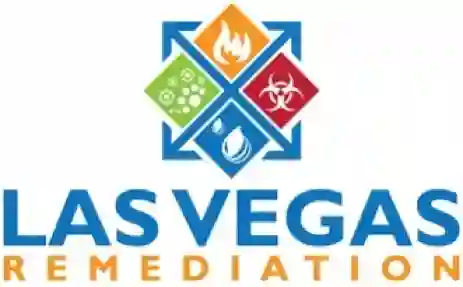Mold is a common problem in many households and buildings, and while it might seem harmless, it can lead to serious health issues and structural damage if left unmanaged. In this guide, we’ll take you through the essential steps of mold remediation, ensuring your environment is both safer and healthier.
Understanding Mold and Its Health Implications
Mold is a type of fungus that thrives in damp conditions and can be found both indoors and outdoors. While most molds aren’t life-threatening, they can produce allergens and irritants that affect health. The health effects of mold exposure can range from sneezing and skin rashes to more severe reactions like asthma attacks. This makes understanding and addressing mold issues crucial for maintaining a healthy living environment.
Indoor mold can grow on various surfaces, including wood, drywall, and carpeting, thanks to its ability to feed on organic materials. Mold reproduces by releasing tiny spores into the air, which can easily spread throughout a building. This ability to spread swiftly means mold can pose a significant risk to both our health and property. Identifying mold and understanding its potential health risks is the first step in managing its impact on your living space.
Identifying Mold in Your Environment
Identifying mold begins with recognizing visible signs, such as discolored spots on walls, floors, or ceilings, which often appear in damp areas like bathrooms or basements. Mold can take on various colors, including black, green, or white, and may have a fuzzy appearance. However, mold is not always visible. It can lurk behind walls or beneath carpets, making it essential to be vigilant about other indicators, like persistent musty odors.
Aside from visual signs and odors, mold identification can involve noticing health symptoms among occupants. If household members frequently experience respiratory issues, headaches, or skin irritations, mold may be a contributing factor. Engaging with professional mold inspection services can help pinpoint concealed mold, providing a comprehensive assessment of its presence and severity within your home.
Evaluating the Extent of Mold Infestation
Determining the severity of a mold problem is crucial to choosing the right remediation approach. Small, manageable mold issues might be dealt with using DIY methods, while more extensive infestations could require professional intervention. Consider factors like the size of the affected area and whether the mold is confined to one spot or has spread to multiple areas throughout your home.
For sizable issues or if you suspect hidden mold, professionals employ tools such as moisture meters and infrared cameras to reveal unseen problems. These advanced techniques in moisture mapping and infrared imaging allow for a thorough evaluation of your home’s mold situation, ensuring that no area is left unchecked when planning remediation efforts.
Preparing for Mold Remediation
A well-prepared space is essential for effective mold remediation. Begin by clearing the area of furniture and personal items to reduce contamination. Protect surfaces not being treated with plastic sheeting. Ensure proper ventilation by opening windows and doors. These preparation steps, as recommended in COIT’s guide on mold remediation preparation, help create a safer environment for remediation work.
Equipping yourself with the right protective gear is also crucial. Gloves, masks, and goggles can shield you from mold spores and cleaning agents. In severe cases, professional remediators may use full-body suits and respirators for increased safety. By preparing effectively, you reduce health risks and contribute to a better-organized, more efficient remediation process.
Effective Mold Cleanup Strategies
The mold cleanup process involves several stages, starting with containment. This step prevents mold spores from spreading to unaffected areas during the removal process. Professionals often use plastic barriers and negative air pressure systems to maintain containment efficiently. After containment comes cleaning and disinfecting affected surfaces with mold-specific cleaners that eradiate spores and prevent return.
In some cases, it may be necessary to remove and replace severely contaminated materials. For instance, if mold has extensively infiltrated drywall or insulation, these materials will need to be carefully taken out and replaced. The use of mold-resistant alternatives ensures further protection and can help prevent future outbreaks.
Following cleanup, the key to a mold-free home is resolving any underlying moisture issues. Repair leaks promptly, maintain proper ventilation, and consider using dehumidifiers in high-humidity areas. These preventive steps not only safeguard against future mold growth but also help sustain a healthier home environment long-term.
Preventing Future Mold Growth
Post-remediation, preventing mold from returning hinges on controlling moisture levels. Keeping indoor humidity below 60% is effective in hindering mold growth. Dehumidifiers and air conditioners play a vital role here, particularly in moisture-prone spaces like basements or bathrooms.
Ensuring good ventilation throughout your home also helps maintain a dry environment. Regularly check ventilation systems like HVACs, clean air ducts, and replace filters. Applying waterproofing and sealing solutions to potential problem areas can further reduce humidity, providing a formidable defense against mold resurgence.
Routine home inspections and maintenance can catch mold issues early. This includes checking for leaks, regularly cleaning gutters, and ensuring proper drainage. By fostering awareness and proactive care, you significantly reduce the risk of mold development, promoting an enduringly healthy living space.
Achieving a Mold-Free Environment for Improved Health
Mold remediation may sound daunting, but with the right steps and precautions, you can effectively manage and prevent mold growth in your home. A mold-free environment not only ensures better air quality and structural integrity but also contributes greatly to the health and well-being of everyone in the space.


